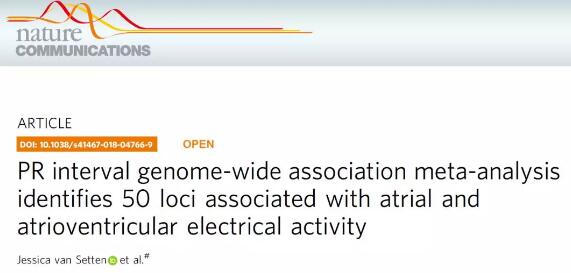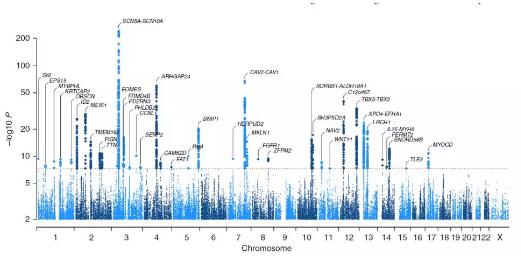We all know that the heart is our "human engine." What some people don't know is that this "engine" needs to pass the first-level electrical signal to pass down the command. If the command is transmitted, the so-called arrhythmia disease will be caused.
The "Head Command" of the heart - the sinus node will first be urged to pass through the atrioventricular to the "secondary command" - the atrioventricular node, and finally through the Purkinje fiber to the final "small soldier" - the myocardium cell. After understanding these, let's see how this heart conduction system is related to the genetic locus.
The ECG PR interval is one of the main characteristics reflecting the signal transmission between the atrioventricular. The abnormal PR interval is also one of the main causes of atrial fibrillation and heart block.
Recently, the researchers conducted a genome-wide association study of more than 92,000 participants and finalized 44 PR locus (room conduction)-related loci. These genes are involved in the regulation of previously defined atrial electrical activity. At the same time, mutations in these loci can lead to arrhythmias such as heart block and atrial fibrillation. In addition, the researchers identified six additional heart rhythm-related loci by a meta-analysis of 105,000 African and European individuals. These 50 loci are involved in the development, transcription factor, ion channel and synthesis of cellular signaling proteins in the atrioventricular conduction, so this will be a top priority for future drug research. The article was published in Nature Communications on the 27th.

The PR interval on the electrocardiogram reflects the depolarization and excitatory conduction of atrial and atrioventricular node cardiomyocytes. Abnormal PR interval duration is associated with increased risk of atrial fibrillation (AF), which has a higher morbidity and mortality. These abnormalities are also associated with cardiac conduction defects and heart block. Patients usually require pacemaker implantation. treatment. Understanding the molecular biology mechanisms that influence the PR interval allows researchers to have a deeper insight into cardiac electrophysiological diseases and to identify potential drug targets for the prevention and treatment of atrial fibrillation and transmitted disease.
Although the previous genome-wide association study (GWAS) identified 10 loci associated with the PR interval in as many as 30,000 individuals. But the author of the paper, Jessica van Setten, a postdoctoral fellow in the Department of Cardiology at the University of Utrecht Medical Center, believes that there may be more relevant genetic loci. Therefore, his research team conducted a more in-depth study on the correlation between PR interval and genes.

Jessica van Setten performed a detailed analysis of the genome of 92,000 individuals, first screening for 44 loci associated with atrioventricular conduction (PR interval). The gene expression levels of these gene loci are significantly enhanced during the development of the cardiac conduction system. Thus, researchers believe that these genes are particularly important for regulating the electrophysiological processes throughout the heart. At the same time, the researchers found that the expression of these genes is tissue-specific, that is, these genes play an important role in the specific period of the heart. In addition, Jessica van Setten et al. also identified specific functional relationships between certain genes and cardiac conduction systems. For example, the locus CAMK2D is related to the duration of the P wave, while MYH6 is related to the P wave duration and the P wave termination force.
The investigators also combined the results of the PR interval analysis with previously published heart rate, QRS duration, and AF results, and finally identified the genetic loci that led to atrial arrhythmias and cardiac conduction abnormalities. They observed that these single nucleotide polymorphisms (SNPs) were significantly pleiotropic, with more than half of the SNPs associated with the PR interval (atrial conduction) and ventricular conduction (QRS interval), atrial rhythm Abnormalities (AF) are associated with heart rate (RR interval).
The significance of the study was to identify 50 genetic loci associated with atrial and atrioventricular electrical activity through a series of meta-analytical studies, including 40 new sites. At the same time, the close relationship between some genes and cardiac electrical activity was clarified. These gene loci lay the theoretical foundation for future gene-targeted treatment of arrhythmia diseases.
Source: DeepTech Deep Technology
GMP ATS Injection, Tetanus Antitoxin, Tetanus Toxoid ,Tetanus Antitoxin Injection, Antitetanus, Refined Tetanus Antitoxinsupplier in China
Tetanus Antitoxin,Tetanus Toxoid,Tetanus Antitoxin Injection,Antitetanus&Refined Tetanus Antitoxin
FOSHAN PHARMA CO., LTD. , https://www.fospharma.com